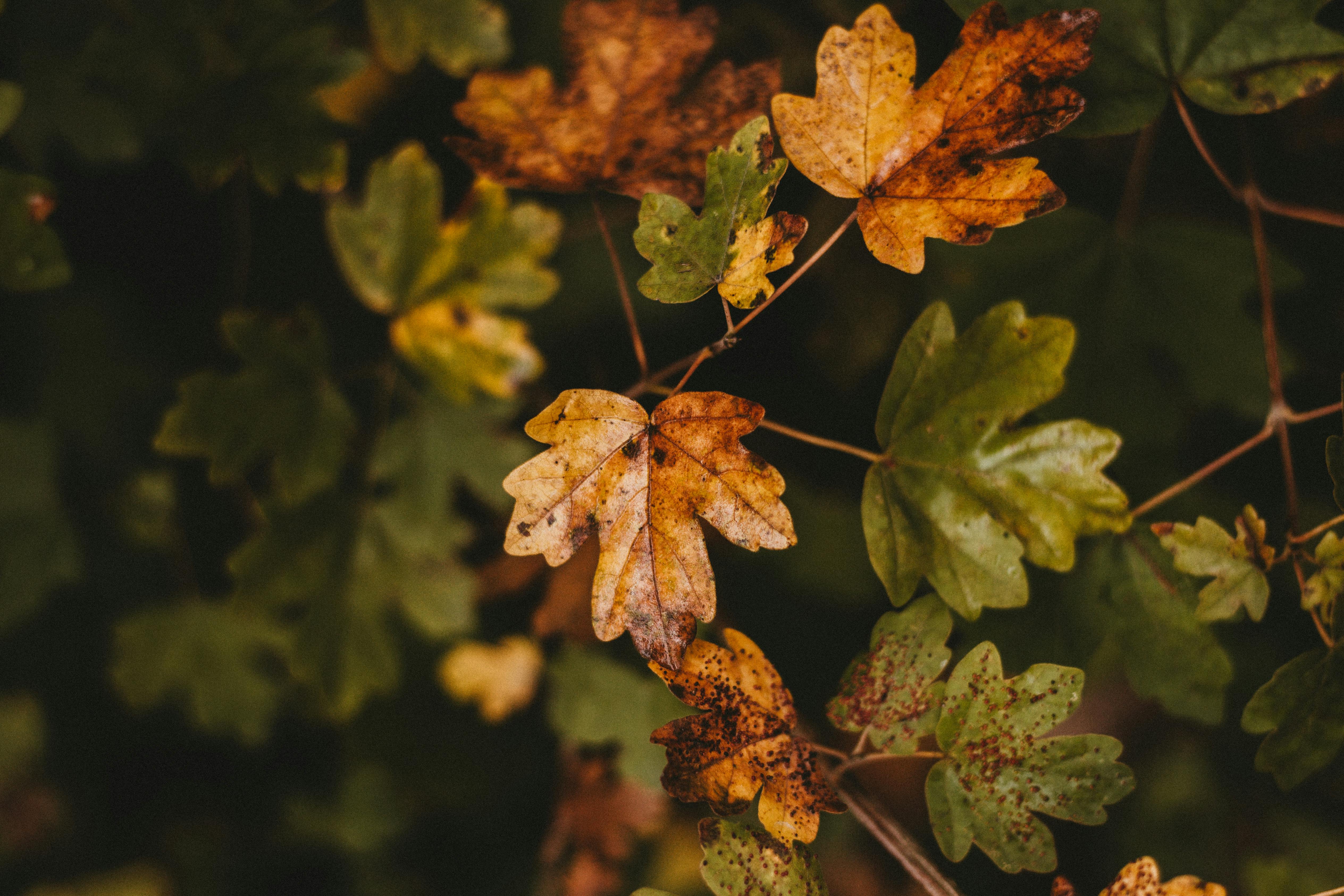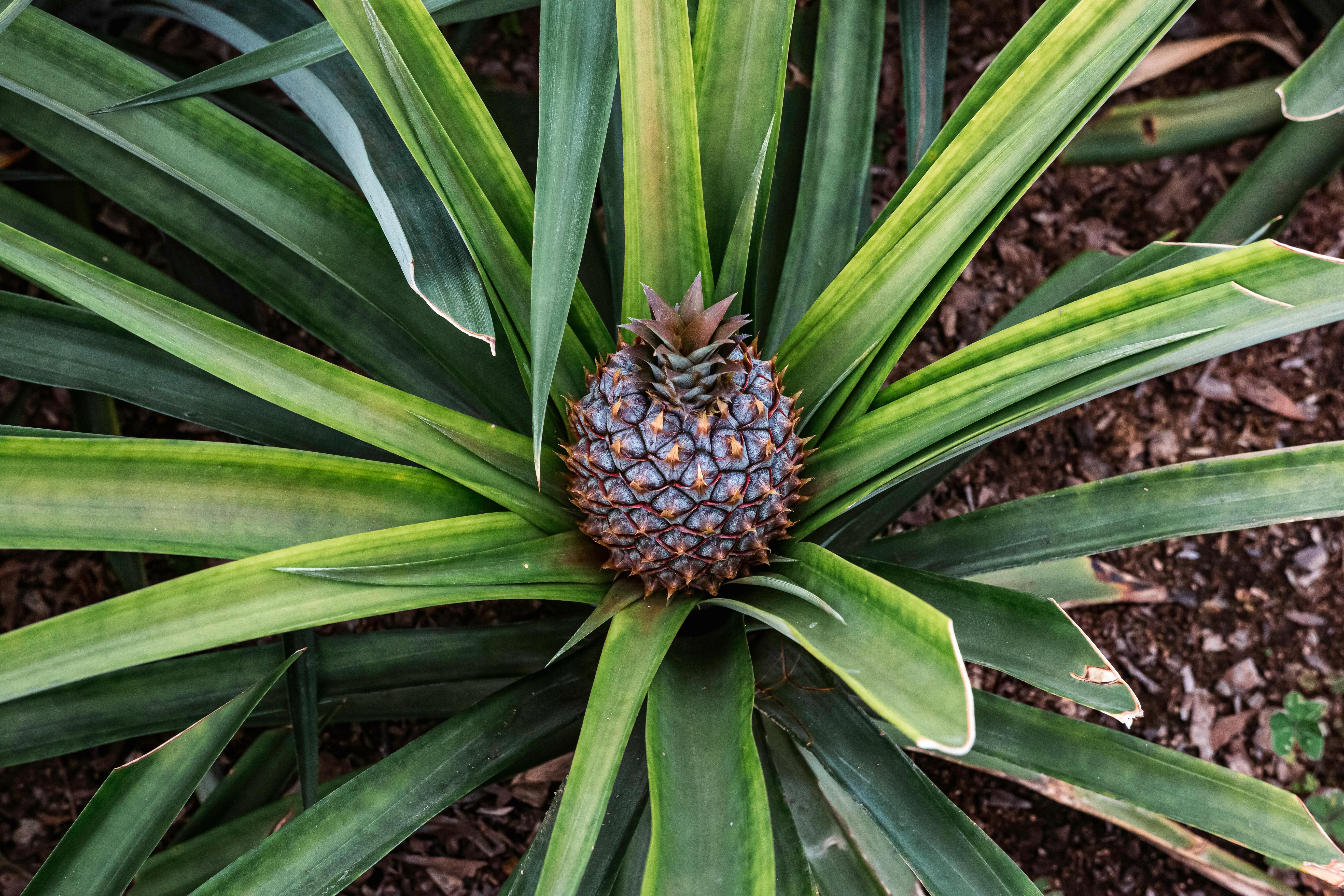Pineapple plants are a tropical delight that many gardeners and farmers strive to grow. However, when the plant starts to turn yellow, it can be concerning for those who are growing them. In this article, we will explore the potential reasons why your pineapple plant may start to turn yellow and discuss some solutions that can help reverse the process.1. Overwatering: Too much water can cause the pineapple plant to turn yellow. Make sure to only water when the soil is dry, and avoid over-saturating the soil.
2. Underwatering: Not enough water can also cause the pineapple plant to turn yellow. Make sure to water regularly and provide adequate hydration for the plant.
3. Sunburn: If your pineapple plant is getting too much sun, it may start to turn yellow. Move your plant to a spot with indirect sunlight or provide some shade during the hottest part of the day.
4. Nutrient Deficiencies: If your pineapple plant is not getting enough nutrients from its soil, it may turn yellow as a result of nutrient deficiencies. Consider adding fertilizer or compost to improve soil quality and nutrient levels.
5. Pests or Diseases: Pests and diseases can also cause yellowing of leaves on your pineapple plant, so inspect regularly for any signs of pests or disease that could be causing the problem.
Identifying The Cause of Pineapple Plant Turning Yellow
If your pineapple plant is turning yellow, it could be a sign of trouble. Yellowing leaves can indicate a variety of problems, from nutrient deficiencies to disease. Identifying the cause of the yellowing will help you determine how to treat the problem and get your pineapple plant back to its healthy green state.
The most common cause of yellowing in pineapple plants is a nutrient deficiency. If your plant isn’t getting enough nitrogen, magnesium, or iron, it may start to turn yellow. To remedy this problem, make sure your plant is getting adequate amounts of fertilizer and check for any signs of nutrient deficiencies.
Another possible cause of yellowing in pineapple plants is overwatering or underwatering. Too much water can lead to root rot and other issues that can cause leaves to turn yellow. Not enough water can also lead to dehydration and nutrient deficiencies, which can also cause leaves to turn yellow. Make sure you are providing the right amount of water for your pineapple plant and not overwatering it.
In some cases, disease can be the cause of yellowing in a pineapple plant. If you notice any spots on the leaves or stems, these could be signs of disease such as blight or rust. If you suspect a disease is causing the issue, treat it immediately with an appropriate pesticide or fungicide according to directions on the product label.
Once you have identified the cause of the yellowing in your pineapple plant, take action immediately to get it back on track. With some simple care and attention, you should be able to get your pineapple plant back to its healthy state in no time!
Dealing With Diseases That Cause Pineapple Plants to Turn Yellow
Pineapple plants can suffer from a variety of diseases that cause the leaves to turn yellow. These diseases can be caused by a variety of factors, including environmental stress, nutrient deficiencies, or insect pests. Knowing how to identify and treat the disease is essential to maintaining healthy pineapple plants.
The first step in treating a pineapple plant with yellowing leaves is to identify the cause of the problem. Common causes of yellowing leaves include nutrient deficiencies, environmental stress caused by too much water or too little sun, or insect pests such as mealybugs and scale insects. If the cause is not immediately apparent, it may be necessary to consult a local plant specialist for help in diagnosing and treating the problem.
Once the cause has been identified, it is important to take steps to correct any environmental issues that may be contributing to the problem. For example, if there is too much water or not enough sun, corrective measures should be taken immediately. In addition, if nutrient deficiencies are present they should be corrected by adding appropriate fertilizer at regular intervals.
Insect pests can also cause yellowing of pineapple leaves and should be treated promptly with an appropriate insecticide or natural remedy such as neem oil. It is important to follow all instructions carefully when using any type of pesticide and take all necessary safety precautions when doing so.
Finally, it is important to keep an eye on your pineapple plants and check for signs of disease or infestations on a regular basis. By doing so you can spot problems early and take steps to correct them before they become more serious.
Check For Insects Damaging Your Pineapple Plant
Pineapple plants are susceptible to insect infestations, which can cause serious damage to the plant. To keep your pineapple plant healthy and free of pests, you should regularly check for signs of insect activity. Look for holes in the leaves, discoloration or wilting of the foliage, or a sticky substance on the leaves which may be sap from a pest. If you notice any of these signs, it is important to act quickly to prevent further damage.
The most common insects that attack pineapple plants include mealybugs, aphids, whiteflies, and scale insects. Mealybugs are small white bugs that feed on the sap of the plant, causing yellowing and wilting of the foliage. Aphids are small green or black insects that feed on the leaves and stems of the plant. Whiteflies are tiny white flying insects that feed on foliage and can cause stunted growth. Scale insects attach themselves to stems or leaves and suck out sap from the plant, resulting in discoloration and yellowing of the foliage.
If you spot any signs of insect infestation on your pineapple plant, it is important to take action right away to prevent further damage. The best way to control pests is with natural methods such as releasing beneficial predatory insects like ladybugs into your garden or using neem oil sprays on affected areas. You can also use chemical pesticides if necessary but always read and follow label instructions carefully before use.
By regularly checking your pineapple plant for signs of insect activity and taking quick action when necessary, you can help keep your pineapple plants healthy and free from pests.

Overwatering Causes Your Pineapple Plant To Turn Yellow
It is very common for a pineapple plant to turn yellow due to overwatering. When too much water is used, the roots of the pineapple plant are unable to absorb enough oxygen from the soil and become saturated with water. As a result, the leaves of the pineapple plant will begin to yellow in color, indicating an unhealthy plant. Too much water can also cause root rot, which can further weaken a pineapple plant and cause it to yellow even more.
In addition, when a pineapple plant has been overwatered for too long, its leaves may become scorched or damaged due to lack of nutrients. The yellowing is often accompanied by wilting or browning of the leaves as well. If left untreated, overwatering can eventually lead to death of the pineapple plant.
To avoid this issue, it is important to only water your pineapple plant when necessary and not overdo it. Make sure that you are using well-draining soil that does not retain too much moisture. You should also avoid watering your pineapple plant during midday when temperatures are highest as this can cause leaf burn and damage. Additionally, it is important to check the soil moisture level regularly and adjust your watering schedule accordingly.
Overall, if you notice your pineapple plant turning yellow due to overwatering, make sure that you take steps immediately in order to prevent any further damage from occurring. Pay close attention to your watering habits and be sure to provide adequate drainage for your pineapple plants in order for them to stay healthy and vibrant for years to come!
Underwatering Can Make Your Pineapple Plant Turn Yellow
Pineapple plants require consistent watering in order to remain healthy and vibrant. Without adequate water, the plant can suffer from yellowing leaves and a decrease in the rate of growth. Underwatering can cause your pineapple plant to turn yellow, and it can also lead to stunted growth and even death if left unchecked.
The best way to ensure your pineapple plant gets enough water is to check the soil moisture level regularly. The soil should be kept moist but not soggy; if it’s too dry, it will cause the leaves of your pineapple plant to start turning yellow. It’s important to water your pineapple plant regularly, especially during hot weather when evaporation is high.
It’s also important to be aware of the water drainage in your area, as too much or too little can both have a negative impact on your pineapple plant. If you have an area with poor drainage, you may need to adjust your watering schedule accordingly or add a layer of mulch or gravel around the base of the plant for better absorption and drainage. If there is too much water around the roots of your pineapple plant, make sure you take steps to reduce this as it can lead to root rot and other adverse effects on the health of your plants.
In addition to providing adequate water for your pineapple plant, it’s important to fertilize regularly as well. A good quality fertilizer will provide essential nutrients that will help keep your pineapple healthy and strong. Regular fertilization will also help prevent yellowing leaves due to lack of nutrients in the soil.
Taking good care of your pineapple plants is essential for keeping them healthy and vibrant. Regular watering, adequate drainage, and fertilizing are all key factors that will help maintain the health of your plants for years to come. With proper care, you can enjoy a lush green pineapple garden that’s sure to last!
Too Much Sunlight Can Lead to a Yellow Pineapple Plant
Pineapple plants are incredibly sensitive to too much sunlight and can quickly turn yellow if exposed to too much direct sun. The leaves of the pineapple plant will start to turn yellow and then eventually dry out, indicating that the plant is getting too much sunlight. To prevent this from happening, it is important to make sure that the pineapple plant is not exposed to more than four or five hours of direct sunlight each day. If the plant is in an area with more direct sun, then it should be shaded with a light cloth or moved into an area where there is less direct sun.
It is also important to monitor the water levels of the pineapple plant and make sure that it does not get too dry. If the soil becomes too dry, then the leaves will start to turn yellow and eventually die off. To prevent this from happening, it is important to water the pineapple plant regularly and keep the soil moist but not overly wet.
Finally, if a pineapple plant has already started turning yellow due to too much sunlight, then it is important to move it into an area with less direct sunlight as soon as possible. The plant may be able to recover if moved quickly enough, but if left in an area with too much sun for too long, then the leaves will eventually die off completely. Taking these steps can help ensure that your pineapple plants stay healthy and vibrant for many years to come!


